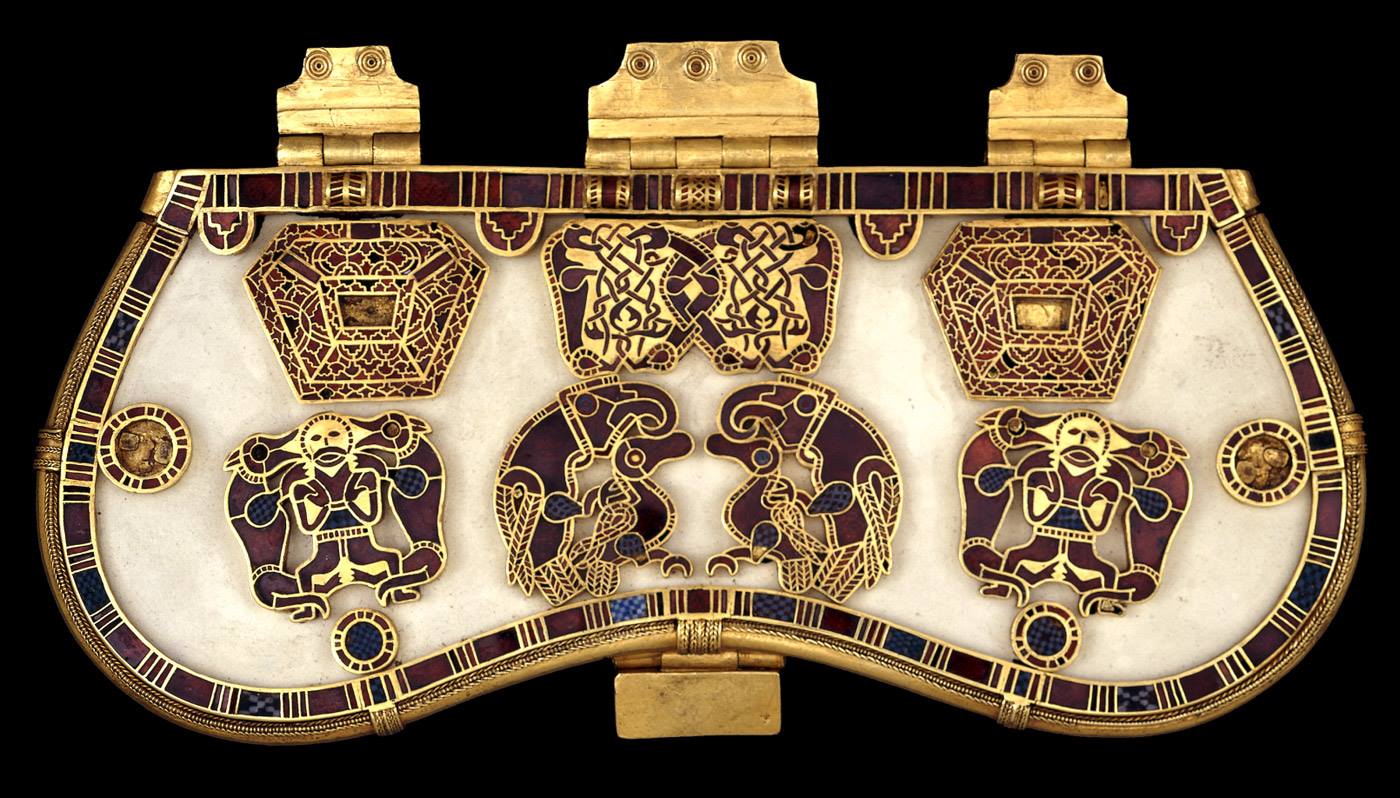It’s a mathematical property of regions of a 2D space that 3 will naturally meet at a point, but 4 or higher have to be contrived to meet at a point. In the US we do have the 4 corners, which is where Arizona, New Mexico, Colorado, and Utah, so there is precedent.
ignirtoq
- 0 Posts
- 60 Comments

 11·4 days ago
11·4 days agoWormholes modeled with mainstream physics are incredibly unstable, to the point that they collapse before even a single particle is able to traverse them. Proposals for ways to stabilize a wormhole rely on models that have not yet been confirmed by experiment. So any answer you get is going to be little more than conjecture, and I don’t think you can get the scientific rigor it sounds like you’re looking for.

 6·5 days ago
6·5 days agoIt was a joke.

 131·5 days ago
131·5 days agoExactly. Ever skip a stone on the surface of a lake? It’s like that, except it’s a continuous skip, with air instead of water, and you’re inside the stone.

 14·19 days ago
14·19 days agoHmm, these numbers seem very low. I wonder how these scores were determined.
They weren’t, because LLMs don’t have reasoning ability, at least not in the way you as a human do. They are generative models, so the short answer is the model most likely made the numbers up, though there’s a chance they pulled them directly from some training data that’s likely completely unrelated to the user’s prompt.
What they generate is supposed to have similar multidimensional correlation as the input data, so there are complex relationships between what the question asked and the output it gave, but these processes don’t look anything like the steps you would go through to answer the same question.

 161·23 days ago
161·23 days agoI don’t think that follows, because those are temporary conditions, and consuming the drug is a choice made by an individual not currently under the influence. So it’s the person’s responsibility before they consume the drug to prepare their environment for when they are under the influence. If they’re so destructive under the influence that they can’t not commit a crime, it is their responsibility not to take the drug at all.

 55·24 days ago
55·24 days agoLine graphs of percentages not based at zero make it difficult for me to grok the magnitude of changes. Missed opportunity for the hue line color to match the actual hue in the vertical. Just being an angle value I have no idea what hue it’s supposed to be.
Been the only one in my family for years using Linux, but over the last few months struggles with Windows have basically resulted in all but one computer in the house being migrated to Linux.
Put it on my 10-year-old son’s desktop because Windows parental controls have been made overly complicated and require Internet connectivity and multiple Microsoft accounts to manage. Switched to Linux Mint, installed the apt sources for the parental control programs, made myself an account with permissions and one for him without permissions to change the parental controls, and done. With Steam he can play all of the games in his library.
Only my wife is still using Windows, but with ads embedded in the OS ramping up, and features she liked getting replaced with worse ones, she’s getting increasingly frustrated with Microsoft.

 5·1 month ago
5·1 month agoOr the octopus boss from Seaside Kingdom in Super Mario Odyssey:

 37·1 month ago
37·1 month agoDemocratic candidates have raised far more than Republicans and can purchase ads at the cheaper rate offered to candidates. Republicans rely more heavily on independent expenditures from their campaign arm and allied super PACs, which have to pay much more per ad.
Gee, it’s almost like Republicans aren’t favored by a large proportion of the population who can donate up to the ~$3,300 federal limit directly to campaigns and have to rely on their wealthy benefactors donating much, much more per capita through side channels that shouldn’t even exist in a functional democracy.
How would you scientifically measure a difference between those two definitions?

 1·2 months ago
1·2 months agoIf it’s dangerous to repair it, it’s dangerous to own. That’s the domain for regulations by the government, not arbitrary software restrictions by software manufacturers.
They don’t implement these to keep you safe. They do it purely to make more money.

 1·2 months ago
1·2 months agoBefore my comment I want to make clear I agree with the conclusion that abortion bans are clearly killing women at statistically significant rates.
That said, the stats reporting here doesn’t make sense:
Among Hispanic women, the rate of women dying while pregnant, during childbirth or soon after increased from 14.5% in 2019 to 18.9% in 2022. Rates among white women nearly doubled — from 20% to 39.1%. And Black women, who historically have higher chances of dying while pregnant, during childbirth or soon after, saw their rates go from 31.6% to 43.6%.
There’s no way 14.5% of Hispanic women in Texas who got pregnant died some time during pregnancy, during child birth, or soon after. That would be unprecedented for any time since the advent of modern medicine. And the chart above this paragraph does not agree with it either. It’s a chart of deaths per hundred THOUSAND live births, and the numbers for all racial groups are all under 100, so less than 0.1%.
The way it’s stated also doesn’t suggest it’s a percent increase because it says it rose from 14.5% to 18.9%. I can’t figure out what they’re trying to say, but they should definitely have been more careful with presenting the numbers.

 6·2 months ago
6·2 months agoQuantum field theory conserves mass-energy, so the new mass is coming from the energy in the Higgs field itself. It settles to a lower energy state and basically transfers that energy as mass to all of the particles that couple with it. Since it’s mass-energy and not just mass that generates gravitational distortions, the large-scale gravitational evolution of the universe probably won’t change, as this just moves things around a bit. It’s not creating energy out of nothing.

 9·2 months ago
9·2 months agoIf the pig option included immune suppression drugs for the rest of your life, or for like 10 years until it wore out and you had to have another major surgery to replace it, mechanical valve plus blood thinners and a yearly blood draw sounds like the much better deal. I know blood thinners come with their own long term effects, but nothing compared to immune suppression.

 1105·3 months ago
1105·3 months agoThe judge also noted that the cited study itself mentions that GitHub Copilot “rarely emits memorised code in benign situations.”
“Rarely” is not zero. This looks like it’s opening a loophole to copying open source code with strong copyleft licenses like the GPL:
- Find OSS code you want to copy
- Set up conditions for Copilot to reproduce code
- Copy code into your commercial product
- When sued, just claim Copilot generated the code
Depending on how good your lawyers are, 2 is optional. And bingo! All the OSS code you want without those pesky restrictive licenses.
In fact, I wonder if there’s a way to automate step 2. Some way to analyze an OSS GitHub repo to generate inputs for Copilot that will then regurgitate that same repo.
The core is about change. To accept climate change means they have to make changes to their lifestyle, and they don’t like having to change. Beyond that, it’s rationalizations and bad faith arguments from the usual grifters and corporations layered on top of that to justify the position they chose emotionally.

 9·3 months ago
9·3 months agoI don’t recommend making significant changes to activity levels at the same time as making diet changes. Weight loss comes from changing what you eat. Exercise is absolutely necessary for a healthy lifestyle, but it is not the major factor in weight loss. And increasing exercise behaviors can destabilize eating habits, making it harder to stick to any good changes you do make with either diet or exercise.
Disambiguation page says it’s also sometimes used as another name for the egg in the basket dish.





That’s the easy question: yes. The hard questions are “when?” and “how can we effectively get ready given the lack of political will?”